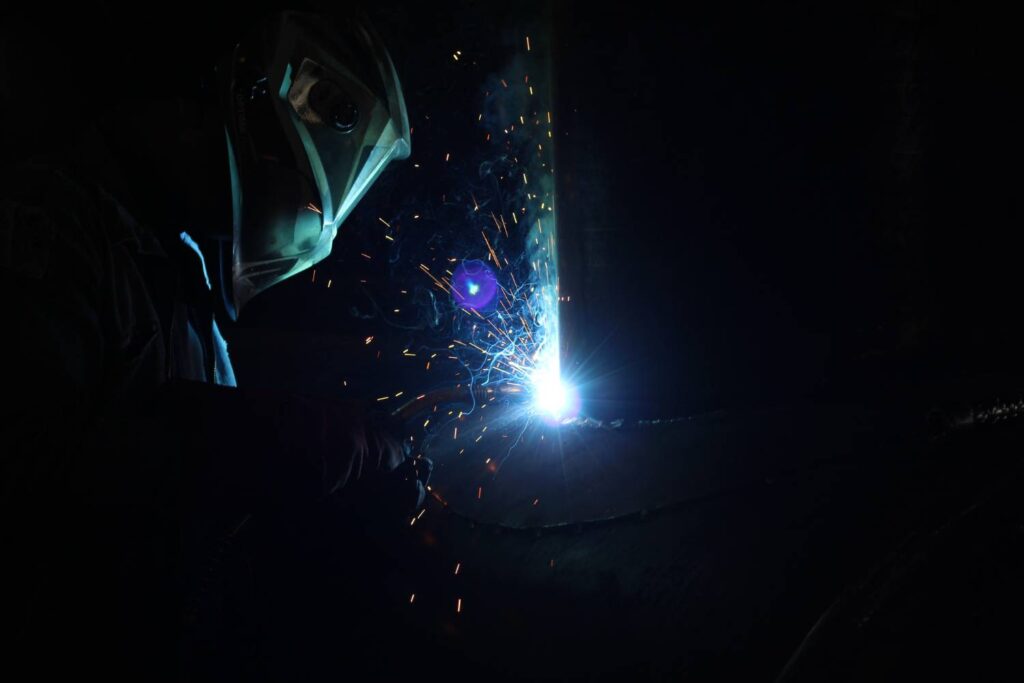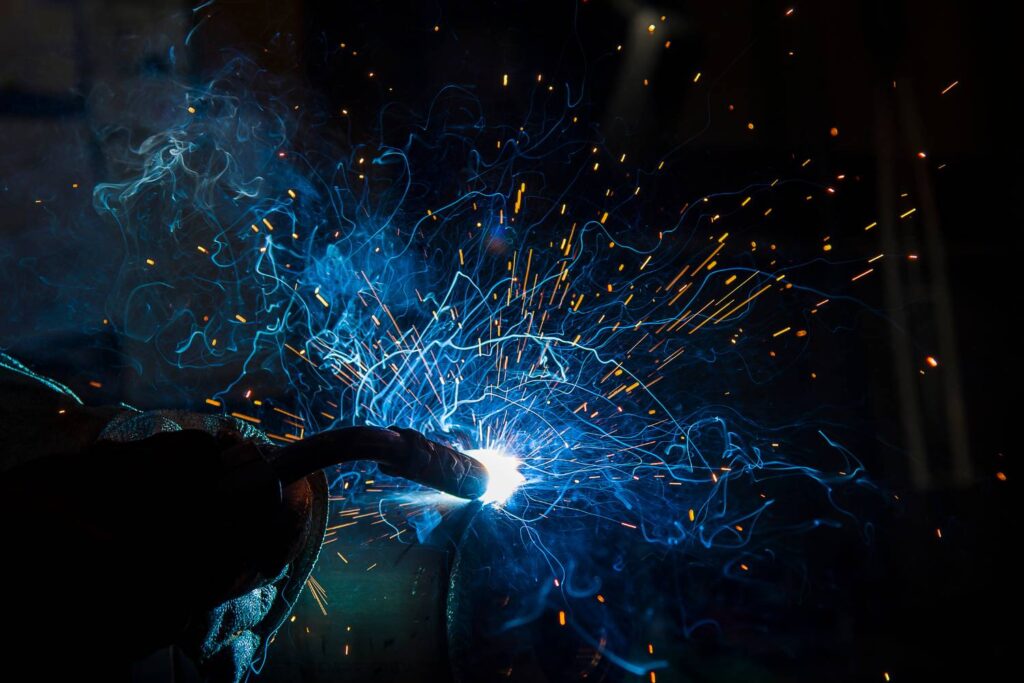Embarking on a journey beneath the surface, underwater welding opens up a realm where fire meets water in a spectacular display of skill and technology. "How To Welding Underwater" delves into the fascinating intersection of welding and diving, a niche yet critical aspect of marine engineering and repair.
This blog aims to illuminate the intricate process, tools, and techniques employed by underwater welders, who brave the depths to ensure the integrity of structures submerged and subjected to the relentless forces of nature.
Underwater welding, a marvel of modern engineering, combines the precision of welding with the challenges of the aquatic environment. It's a task that demands a thorough understanding of welding principles and diving proficiency. Whether it's repairing ships, maintaining oil platforms, or restoring underwater pipelines, the role of an underwater welder is pivotal in preserving the lifelines of our maritime infrastructure.
Table of Contents
The Basics of Submerged Welding
Underwater welding, a marvel of engineering and diving, merges the precision of welding with the unpredictability of the underwater environment. This specialized technique, known as hyperbaric welding, is categorized into two primary methods: wet and dry. Wet welding is performed directly in the water, while dry welding occurs within a pressurized, dry chamber, offering a controlled environment for the welder.
The origins of underwater welding can be traced back to 1932, pioneered by Russian metallurgist Konstantin Krenov. It has since become a cornerstone in repairing and maintaining submerged structures, including ships, pipelines, and offshore oil platforms.
This technique is crucial for salvaging ships, conducting urgent repairs, installing new offshore drilling infrastructures, and modifying existing underwater facilities. Operations can vary from shallow waters to depths of up to 400 feet, typically in saline conditions.
Underwater welding is not limited to the oil and gas industry; naval forces also utilize these techniques for ship salvage operations and harbour clearance. The complexity and inherent risks of underwater welding require only trained and qualified professionals to undertake these tasks.
Aspiring underwater welders typically begin with professional welding training, followed by commercial diving skills, culminating in specialized underwater welding training that marries these two skill sets.

The Science Behind Underwater Welding
Underwater welding, a marvel of engineering and science, combines the complexities of welding with the challenging conditions of the underwater environment.
This unique welding process, known as hyperbaric welding, is performed at elevated pressures, typically underwater. It encompasses two primary methods: wet welding and dry welding, each with its distinct techniques, applications, and challenges.
Wet Welding: A Dive Into The Depths
Wet welding directly exposes the welder and equipment to the aquatic environment, utilizing a particular waterproof electrode. This method uses a gas bubble around the welding arc to shield the weld from water.
The process is intricate, with the electric arc generating a mix of gases that protect the weld area. Despite its efficiency and cost-effectiveness for urgent underwater repairs, wet welding presents challenges such as the increased risk of defects due to rapid cooling and difficulty inspecting weld quality underwater.
Dry Welding: Precision Under Pressure
Dry welding, or hyperbaric welding, occurs within a specially designed chamber that is either entirely or partially filled with a gas mixture, creating a dry and pressurized environment for the welder. This method allows for greater control over the welding process, closely resembling conditions found in surface welding.
Dry welding chambers, or habitats, range from large structures capable of accommodating multiple divers to small enclosures for individual welds. This technique is particularly valued for producing high-quality welds, crucial for critical repairs on offshore structures and pipelines.
The Role Of Science And Technology
The science behind underwater welding is deeply rooted in physics and materials science, addressing challenges such as preventing electric shock, controlling the effects of pressure on welding arcs, and mitigating the rapid cooling of welds. Innovations in electrode design, welding techniques, and safety protocols have significantly advanced the field, making underwater welding a vital tool in marine construction and repair.
Underwater welding's significance extends beyond its technical aspects, offering solutions for maintaining and repairing ships, offshore platforms, and underwater pipelines. Despite the inherent risks, including the potential for electric shock and the physiological effects of deep-water pressure on divers, underwater welding remains a highly specialized and indispensable skill in the marine industry.
Preparing For Underwater Welding
Embarking on a career in underwater welding is a journey that combines the art of welding with the science of diving, creating a unique and challenging profession. This guide synthesizes insights from various sources to provide a comprehensive overview of how to prepare for a career in underwater welding.
Educational Foundation
The first step towards becoming an underwater welder is to obtain a high school diploma or GED. This foundational education is crucial as it prepares you for further specialized training. Basic mathematics, physics, and technical drawing knowledge can be particularly beneficial, laying the groundwork for understanding welding and diving principles.
Commercial Diving Certification
The next step is to apply to a commercial diving school, where you will undergo rigorous training in diving physics, underwater tools, and safety protocols. Passing a physical exam is a prerequisite to ensure you're fit for the demanding conditions of underwater work. This phase is critical in learning how to safely and efficiently operate in underwater environments, a fundamental aspect of underwater welding.
Specialized Underwater Welding Training
With a solid welding and commercial diving foundation, you can pursue specialized training in underwater welding. This training often involves learning wet welding and dry/hyperbaric welding techniques, each with its challenges and applications.
Wet welding directly exposes you to the water, requiring you to use waterproof electrodes and manage the unique welding dynamics in a submerged environment. Dry/hyperbaric welding, on the other hand, involves welding inside a pressurized chamber, offering a dry environment that mimics surface welding conditions more closely.
Safety First
Underwater welding is inherently dangerous, with risks ranging from electric shock to decompression sickness. Comprehensive training in safety protocols is imperative. Understanding the hazards, such as differential pressures (Delta P) and the potential for explosive gases, is crucial for minimizing risks. Safety training also covers emergency procedures, ensuring you're prepared to handle unexpected situations.
Continuous Learning And Adaptation
The field of underwater welding is continuously evolving, with new technologies and techniques emerging. Staying informed about industry trends and advancements is essential for long-term success. Additionally, adaptability and problem-solving skills are invaluable, as underwater welders often face unpredictable conditions and must find creative solutions to complex challenges.
Equipment And Tools Used In Underwater Welding
Underwater welding, a specialized field combining commercial diving skills with advanced welding techniques, requires unique equipment and tools for the aquatic environment. This comprehensive overview draws from various authoritative sources to illuminate the essential gear and apparatuses underwater welders employ to execute their tasks effectively, safely, and efficiently.
Diving Equipment And Protective Gear
The diving gear is the foundation of underwater welding equipment, including the standard Navy MK 1, MK 12, or Superlite-17 helmets. These helmets are designed with vast fields of view and can be equipped with welding shields for eye protection during welding tasks. The welding shield, often made of gold foil laminated with polycarbonate, comes in various shades to protect the welder's eyes from the bright arc light.
Underwater welders wear heavy-duty rubber gloves over surgical gloves to protect their hands from electric shock and hot materials. A diving suit, usually a dry suit made of neoprene, rubber, or shell, offers climate control and protection against the underwater environment. For additional protection, welders may wear coveralls over their suits to shield against molten metal splashes.
Welding And Cutting Equipment
The core of underwater welding tools is the welding and cutting equipment, which includes a DC welding power source capable of delivering up to 400 amperes for oxygen-arc and shielded metal arc welding. The setup also involves a safety switch rated for the appropriate amperage and voltage, welding cables of suitable sizes with bolt-together connectors, and a "C"-type ground clamp. Underwater cutting torches, oxygen hoses, and a manifold connecting multiple gas cylinders are essential for cutting operations.

Electrodes And Stingers
Underwater welding electrodes are specially manufactured to perform in wet conditions, marked with ratings for tensile strength, yield strength, elongation, and amperage. These ratings ensure the electrodes can withstand welding and produce efficient and safe welds. The stinger, a lightweight plastic tool, holds the electrodes and is designed for simplicity and ease of use, allowing welders to maneuver it comfortably during long welding sessions.
Power Supply And Safety Measures
A 400 amp or larger, engine-driven DC welding generator with a minimum of 60 per cent duty cycle is the preferred power supply for underwater welding. This generator should have independent voltage and amperage controls to adjust for different welding conditions. Power converters may also be used for salvage work when ship or shore power is available, though their use is limited to shallower depths and shorter welding leads.
Conclusion
Underwater welding is a complex and critical aspect of marine engineering and repair, combining the precision of welding with the challenges of the aquatic environment. This specialized technique, known as hyperbaric welding, is performed at elevated pressures, typically underwater, and involves two primary methods: wet and dry welding.
Wet welding involves exposing the welder and their equipment to the aquatic environment, using a particular waterproof electrode to shield the weld from water. This method is efficient and cost-effective for urgent underwater repairs but presents challenges such as increased defects due to rapid cooling and difficulty inspecting weld quality underwater.
Dry welding, or hyperbaric welding, occurs within a specially designed chamber filled with a gas mixture, creating a dry and pressurized environment for the welder. This technique is particularly valued for producing high-quality welds, crucial for critical repairs on offshore structures and pipelines. The science behind underwater welding is deeply rooted in physics and materials science, addressing challenges such as preventing electric shock, controlling pressure effects on welding arcs, and mitigating rapid cooling of welds.
Underwater welding's significance extends beyond technical aspects, offering solutions for maintaining and repairing ships, offshore platforms, and underwater pipelines. Despite inherent risks, underwater welding remains a highly specialized and indispensable skill in the marine industry.
To become an underwater welder, one must first obtain a high school diploma or GED, which is essential for a foundational mathematics, physics, and technical drawing education. Next, gain topside welding experience by earning certifications in welding techniques like Shielded Metal Arc Welding (SMAW) or Gas Tungsten Arc Welding (GTAW). Apply to a commercial diving school and undergo rigorous training in diving physics, underwater tools, and safety protocols.
Second, pursue specialized underwater welding training, often learning wet welding and dry/hyperbaric welding techniques. Safety protocols are crucial in underwater welding, as they expose the welder to water and require understanding of hazards like differential pressures and explosive gases.
Continuous learning and adaptation are essential for long-term success in underwater welding. The equipment and tools used in underwater welding include diving gear, welding and cutting equipment, electrodes, and stingers. The welding and cutting equipment includes a DC welding power source, safety switch, welding cables, and a "C"-type ground clamp.
Underwater welding electrodes are specially manufactured for wet conditions, with ratings for tensile strength, yield strength, elongation, and amperage. A 400 amp or larger, engine-driven DC welding generator with a minimum of 60 per cent duty cycle is the preferred power supply for underwater welding, with independent voltage and amperage controls.
Content Summary
- Underwater welding combines welding art with diving science, creating a unique profession.
- A high school diploma or GED is essential for starting a career in underwater welding.
- Knowledge of mathematics, physics, and technical drawing is beneficial for understanding welding and diving principles.
- Mastering topside welding is crucial before undertaking underwater welding tasks.
- Certifications in welding techniques like SMAW or GTAW are vital for skill validation.
- The American Welding Society (AWS) governs these certifications, ensuring skill proficiency.
- Gaining topside welding experience makes candidates more competitive for commercial diving schools.
- Commercial diving school training includes diving physics, underwater tools, and safety protocols.
- Passing a physical exam is required to ensure fitness for underwater work's demanding conditions.
- Specialized training in underwater welding covers wet and dry/hyperbaric welding techniques.
- Wet welding exposes welders to water, requiring the use of waterproof electrodes.
- Dry/hyperbaric welding is performed inside a pressurized chamber, simulating surface welding conditions.
- Underwater welding carries risks such as electric shock and decompression sickness.
- Comprehensive safety training and understanding of hazards like differential pressures are crucial.
- Continuous learning and adaptability are essential due to the evolving nature of underwater welding.
- Underwater welding equipment is designed specifically for the aquatic environment.
- Standard Navy MK 1, MK 12, or Superlite-17 helmets are foundational diving gear.
- Welding shields attached to helmets protect welders' eyes from bright arc light.
- Heavy-duty rubber gloves over surgical gloves protect hands from electric shock and hot materials.
- Diving suits, typically dry suits, offer climate control and protection against underwater elements.
- Coveralls may be worn over diving suits to protect against molten metal splashes.
- A DC welding power source capable of delivering up to 400 amperes is core to welding and cutting equipment.
- The welding setup includes safety switches, cables, and "C"-ground clamps.
- Underwater cutting torches, oxygen hoses, and manifolds are essential for cutting operations.
- Electrodes for underwater welding are specially manufactured to perform in wet conditions.
- Electrodes are marked with ratings for tensile strength, yield strength, elongation, and amperage.
- The stinger, a lightweight plastic tool, holds the electrodes for welding.
- A 400 amp or larger engine-driven DC welding generator is preferred for underwater welding.
- Power converters can be used for salvage work when ship or shore power is available.
- The profession requires specialized training, safety awareness, and continuous adaptation.
- Welders must be proficient in both the technical aspects of welding and the practical aspects of diving.
- Safety protocols are imperative to minimize the inherent risks of underwater welding.
- The equipment used in underwater welding is tailored to withstand the challenging underwater environment.
- Understanding the specific requirements and challenges of underwater welding is crucial for success.
- The journey to becoming an underwater welder involves rigorous training and certification processes.
- Adaptability and problem-solving skills are invaluable in facing unpredictable underwater conditions.
- The field of underwater welding is continuously evolving with new technologies and techniques.
- Staying informed about industry trends is essential for long-term success in underwater welding.
- The unique equipment and tools used in underwater welding ensure effective, safe, and efficient task execution.
- Protective gear, including diving helmets and gloves, is essential for welder safety.
- Welding and cutting equipment must operate effectively in the aquatic environment.
- Specialized electrodes and stingers are designed for use in wet welding conditions.
- Power supply and safety measures are critical components of the underwater welding setup.
- The comprehensive overview aims to prepare individuals for a career in underwater welding.
- The combined art and science of underwater welding make it a challenging yet rewarding profession.
- Achieving proficiency in underwater welding requires dedication to learning and skill development.
- Safety in underwater welding cannot be overstated, and comprehensive training is essential.
- The equipment and tools used in underwater welding are specifically designed to meet the unique demands of the profession.
- Pursuing a career in underwater welding offers the opportunity to work in a specialized and evolving field.
- Preparation for underwater welding involves a systematic approach to education, training, and safety awareness.
Frequently Asked Questions
Underwater welding is a specialized welding method performed while submerged underwater. It combines commercial diving techniques with welding skills to repair and install structures below the water's surface.
Yes, there are two main types of underwater welding: wet welding and dry (hyperbaric) welding. Wet welding is done directly in the water, using waterproof electrodes, while dry welding is performed inside a specially constructed dry chamber submerged underwater.
Underwater welders need various equipment, including a diving suit, diving helmet with a welding shield, heavy-duty rubber gloves, a DC welding power source, welding cables, electrodes designed for underwater use, and a stinger (electrode holder). Safety equipment and communication devices are also essential.
To become an underwater welder, you must first gain experience and certification in topside welding. Then, you'll need to complete a commercial diving certification program that includes underwater welding training. Physical fitness and passing a diving medical examination are also required.
Underwater welding is considered hazardous due to risks such as electric shock, decompression sickness, and the potential for explosive gases. Comprehensive safety training and adherence to protocols are crucial to minimize these risks.

